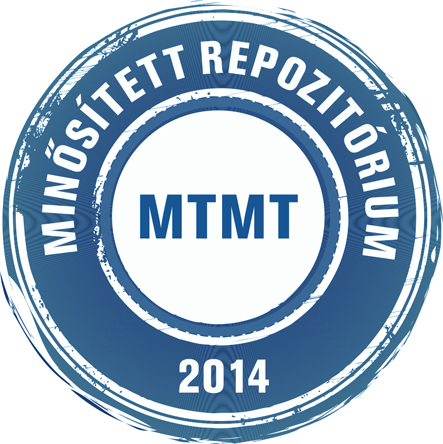Kiss Máté
A magyar-skandináv érintkezések kérdése a kezdetektől Könyves Kálmán uralkodásáig.
Doktori értekezés, Szegedi Tudományegyetem (2000-).
(2023)
|
PDF
(disszertáció)
Download (6MB) |
|
|
PDF
(tézisfüzet)
Download (270kB) |
|
|
PDF
(címlap)
Download (96kB) |
Magyar nyelvű absztrakt
A disszertáció célja, hogy bemutassa a magyar–skandináv érintkezéseket a kezdetektől egészen Könyves Kálmán uralkodásáig. A vizsgált periódus nagyjából egybeesik az ún. viking korral, amikor a normannok nagyfokú aktivitása figyelhető meg Skandinávián kívül. A skandinávok részt vettek a kelet-európai távolsági kereskedelemben és le is telepedtek az útvonalként szolgáló nagy folyók mentén. Ez a történeti jelenség lehetővé tette számukra, hogy kapcsolatba kerüljenek más népekkel, beleértve a magyarokat is. E kelet-európai kontextusban az írott források ruszoknak és varégoknak hívják őket. A ruszok különféle politikai entitásokat hoztak létre, melyek közül a legfontosabb politikai formáció a Rurikidák vezette Kijevi Rusz volt. Az írott források többnyire a magyarok és a ruszok közötti kapcsolatokról írnak, amely súlyos módszertani problémákat vet fel. Habár látunk skandinávokat a rusz név használata mögött, mégis nyilvánvaló, hogy a rusz jelentése komoly átalakuláson ment keresztül a vizsgált időszakban és a Rusz állam soketnikumú lakosságának elnevezésévé vált. Ennélfogva nem lehet a skandinávot és a ruszt egymással azonosnak tekinteni. Amikor magyar–rusz kontaktusokról olvasunk, nem tudjuk, de legalábbis igen korlátozott lehetőségeink vannak annak eldöntésére, hogy azok a ruszok skandinávok, szlávok, vagy etnikailag kevert népesség voltak-e. A magyarok és a ruszok először a 9. században kerültek egymással kapcsolatba az olyan nagy folyók mentén, mint a Volga és a Dnyeper. Az érintkezések különféle területeken jöttek létre, mint a kereskedelem, kultúra, diplomácia, dinasztikus kapcsolatok stb. Különösen figyelemre méltók e tekintetben a katonai struktúrák: a szláv druzsina és a bizánci hadsereg. Ezen felül nem hagyható figyelmen kívül skandinávok és skandináv karakterük egyes elemeit őrző ruszok 11. századi magyarországi jelenlétének lehetősége sem.
Absztrakt (kivonat) idegen nyelven
The aim of the dissertation is to present contacts between Hungarians and Scandinavians from the beginnings until the reign of Hungarian King Coloman the Learned (†1116). The period chosen for the investigation by and large covers the so called Viking Age when intensified activity of Scandinavians can be observed out of Scandinavia. Scandinavians took part in long-distance commerce in Eastern Europe and they also settled down along the important river routes. This historical phenomenon enabled them to get in touch with other peoples, including the Hungarians. In Eastern European context, the written sources call them Rus’ and Varangians. These Rus’ created different political entities but the most important political formation was the one led by the Rurikids from Kiev (Kievan Rus’). Written sources write mostly about relations between Hungarians and Rus’ which raises serious methodological issues. Although we can recognize Scandinavians in the use of Rus’, it is obvious that its meaning changed significantly during the period in question and became the name of the ethnically mixed population of the Rus’ state. Consequently, the terms Scandinavian and Rus’ can not be considered the equivalent of each other. When reading about Hungarian–Rus’ contacts in the sources, we do not know or at least we have very limited opportunity to decide who those Rus’ were, Scandinavians, Slavs or ethnically mixed community. Hungarians and Rus’ came into contact for the first time somewhere along the large rivers like the Volga and the Dnieper in the 9th century. Contacts between them took place on various fields such as commerce, culture, diplomacy, dynastic ties etc. The connection is especially remarkable in the military structures like the Slavic druzhina (retinue) and the Byzantine army. Moreover, we must take into account the possible presence of Scandinavians and Rus’ – who preserved elements of Scandinavian cultural characteristics – as warriors in 11th-century Hungary as well.
| Mű típusa: | Disszertáció (Doktori értekezés) |
|---|---|
| Publikációban használt név: | Kiss Máté |
| Idegen nyelvű cím: | The Question of Hungarian–Scandinavian Connections from the Beginnings until the reign of King Coloman the Learned |
| Témavezető(k): | Témavezető neve Beosztás, tudományos fokozat, intézmény MTMT szerző azonosító Tóth Sándor László MTA doktora, egyetemi tanár, Középkori és Kora újkori Magyar Történeti Tanszék SZTE / BTK / TI 10009310 |
| Szakterület: | 06. Bölcsészettudományok > 06.01. Történettudomány és régészet 06. Bölcsészettudományok > 06.01. Történettudomány és régészet > 06.01.01. Történettudomány > 06.01.01.05. Középkori történelem |
| Doktori iskola: | Történelemtudományi Doktori Iskola |
| Tudományterület / tudományág: | Bölcsészettudományok > Történelemtudományok |
| Nyelv: | magyar |
| Védés dátuma: | 2023. február 16. |
| Kulcsszavak: | magyar, skandináv, rusz, kapcsolat, viking kor, dux Ruizorum, Tyrker, kölpények |
| EPrint azonosító (ID): | 11379 |
| A mű MTMT azonosítója: | 33183678 |
| doi: | https://doi.org/10.14232/phd.11379 |
| A feltöltés ideje: | 2022. júl. 01. 08:45 |
| Utolsó módosítás: | 2023. szept. 06. 15:02 |
| Raktári szám: | B 7189 |
| URI: | https://doktori.bibl.u-szeged.hu/id/eprint/11379 |
| Védés állapota: | védett |
Actions (login required)
 |
Tétel nézet |






